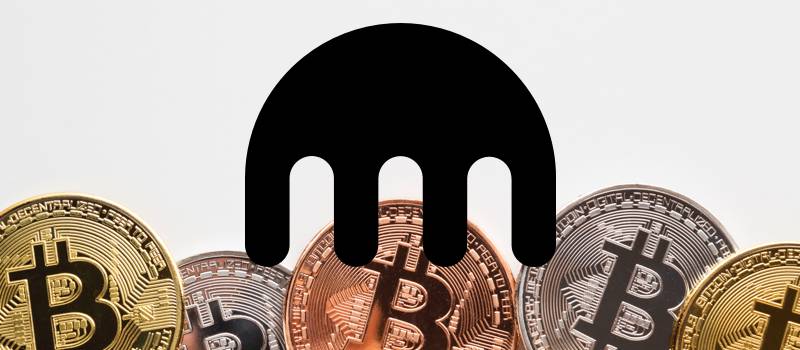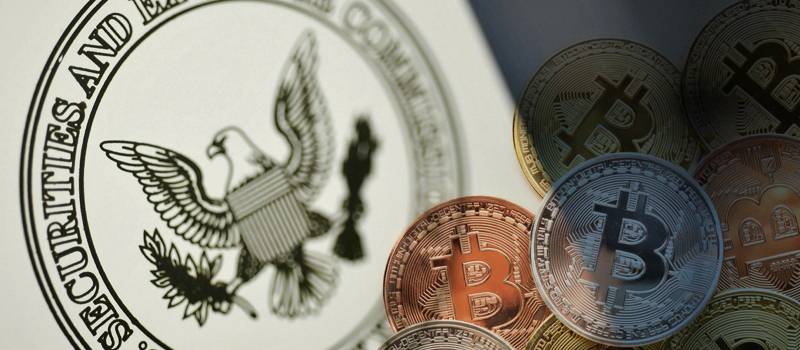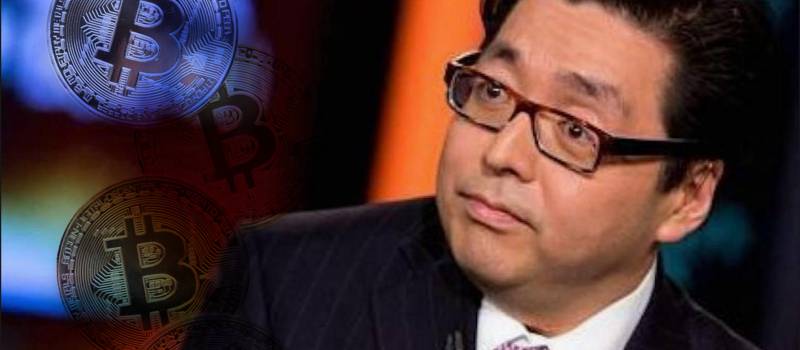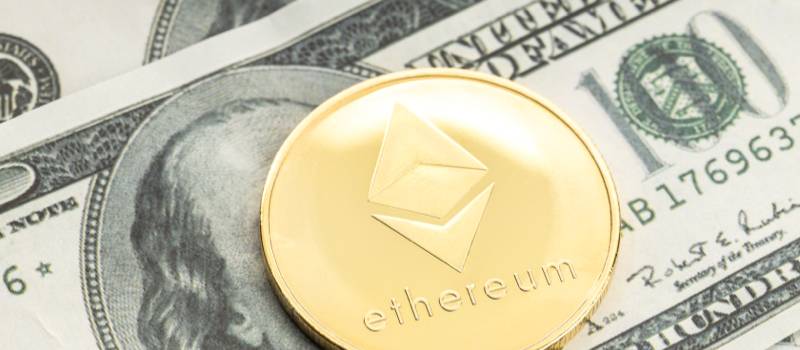October 2021 In Review
The month of October saw the whales bouncing high out of the water from last month’s murky news and surging to new heights! Gotta love those whales!!! Even SEC regulations and Gary Gensler himself could not stop crypto’s rise and perhaps he is stuck back down in the swells. NFT’s showed up in Times Square in New York City and then were everywhere, and more and more countries were planning on adopting Bitcoin as legal tender. Meantime, all of the signals came together making a bullish case for BTC and ETH in the short and long term, and we also learned that Bank of America was turning into a crypto fan. At the beginning of the month, we found out which states in the U.S. were best for BTC mining, and how DC Comics was planning one of the largest NFT drops ever. Outside the U.S., Brazil declared that Bitcoin was soon to become legal tender in that huge country. ETH was primed for a rally into the second and third weeks of the month, and then word came that its developers were perhaps going to delay their difficulty time bomb until the second quarter of 2022. Between the middle and end of the month, all kinds of price predictions as to where BTC would end the year were coming from everywhere, with the most likely scenario seeing the number one crypto coin ending the year at, or close to, $100,000 per coin. Then the onslaught of even more good news: Mass Mutual tripled its BTC investment; the SEC finally approved three Bitcoin ETF’s; Walmart was making urgent plans to add Bitcoin ATMs to its stores, and the world’s first stable coin backed by eight currencies under the Swiss Sandbox Regime was going to be issued by X8 AG. Finally, as the month came to a close, BTC hit yet another fresh All-Time High!
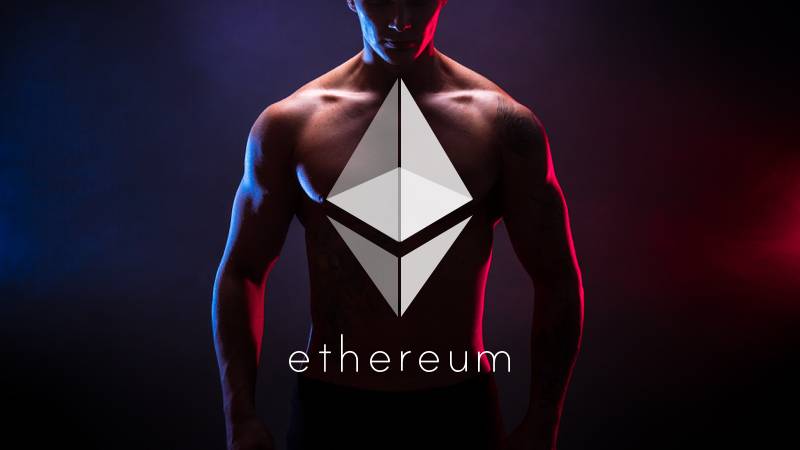
Ethereum Regains Strength, Why $3,200 is The Key for More Upsides
During the first week of the month, Ethereum started a strong increase from the $2,750 support zone, and the price is now trading above $3,000, which is near the 100-hour simple moving average. There had been a major declining channel for the second largest crypto coin by market cap, with resistance near $2,925 on the hourly chart of ETH/USD. At this time, it seems likely that Ethereum’s price has been gaining momentum – Ethereum started a steady increase above $3,000 against the US Dollar. It is felt by many traders, that ETH must clear $3,200 to continue higher in the near term. Ethereum found a strong support near the $2,750 level, and that is where it has now started a fresh increase. From there, ETH broke the $2,880 and $2,950 resistance levels to move into positive territory. The next resistance would have been at or near the $3,175 zone. An immediate support sits near the $3,065 level, which would be the 23.6% Fib retracement level of the upward move from the $2,740 swing low to $3,165 high.
On the upside, the next immediate resistance was then near the $3,165 level, and the target breakout zone is viewed by professional investors at or near the $3,200 zone. A close above the $3,200 resistance could push the price further higher, all the way up to and possibly through $3,320. On the downside, if Ethereum were to fail to continue higher above the $3,165 and $3,200 resistance levels, it could start a downside correction, with initial support back to near the $3,065 level. The next major support seems to be forming near the $3,000 level, which is close to the 100-hour simple moving average. Any more losses might call for a test of the 50% Fib retracement level which is the upward move from the $2,740 swing low to $3,165 high, and now stands at $2,950. If ETH fails to stay above $2,950, it could resume a steadier decline in the near term. Here is a rundown of the technical indicators: Hourly MACD – The MACD for ETH/USD is slowly losing pace in the bullish zone. Hourly RSI – The RSI for ETH/USD is now well above the 50 level. Major Support Level – $3,065, and finally, the Major Resistance Level – $3,175. Happy investing!

A 12-year old got rich by selling NFTs. Here’s what you need to know
His interest in programming sprouted from when he was just nine years old, and perhaps he was slightly influenced by his father, Imran, who was a hard-working web developer. Benyamin Ahmad started programming by learning HTML and CSS, and once that took off, he advanced his coding skills by learning other programs, including JavaScript. He talked recently to CNBC for an interview and said that his interest in NFTs and smart contracts grew earlier this year. By the way, the twelve-year-old does more than just programming, he also enjoys swimming, taekwondo, and coding. Oh, and did I mention? He is on his way to becoming a millionaire! That feat was made possible by his selling of his hard-earned NFT collection called Weird Whales. When pressed, Benyamin will tell you that his interest in the technology behind NFTs is what motivated him to create his NFT collection, the Weird Whales.
Turns out, his father greatly influenced Benyamin’s passion for technology, and this began as the boy watched his dad working intensely with computers because of his career as a web developer. Once he realized the desire his son had for computers, Imran began showing his son simple little skills in programming. Imran himself admits that his passion for computers grew from the time he was twelve, when his own father got him his first computer. He would learn by trying out the programming written on the back of the box, and this is where he began typing codes and watch them play out in fascination as animations. He took up computer studies at the age of eighteen, and thirty-five years later, he is still passionate about coding and programming and is currently working at the London Stock Exchange. Imran says that he noticed Benyamin’s interest in computers at the tender age of six, and in pursuit to nurture his son’s interest, he purchased a new laptop for Benyamin. He states that it started as fun and games, but after confirming that his boy was genuinely interested, he moved to more structured and formal training.
The training involved coding every day, even during holidays, because, according to Imran, consistency is key in coding. For that reason, he made certain that his boy practiced coding every day, even if for just a half an hour. Turns out, that many people do not know that Weird Whales was the second NFT project from Benyamin. He had initially started off with NFT’s by creating Minecraft Yee Haa, drawing his inspiration from the iconic game Minecraft, where he managed to create and upload forty small and unique Minecraft’s. However, this project did not go far because he created them manually, making it very difficult, and Benyamin did not sell any from his first collection because he did not understand marketing at that time. After studying how to generate NFTS with his father’s help, Benyamin finally used the acquired script to create unique images with different traits and backgrounds. The twelve-year-old stated that his inspiration for Weird Whales came from the popular term Whales in Bitcoin, which represents investors with large amounts of Bitcoins. Benyamin says that the project cost him a total of three hundred dollars and that it sold in nine hours. So far, he has earned more than $400,000. Although he says that he does not own a bank account since his parents are paying for all his expenses, he aims to prove that you do not need a bank account to survive and thrive in the financial world.

U.S Senate candidate proposes Fort Nakamoto as a strategic Bitcoin reserve
Inspired by China’s renewed crackdown on cryptocurrency early in October, which led to further downturns across the market, Blake Masters wanted to set up “Fort Nakamoto” as a “strategic reserve for Bitcoin.” Likening his vision to sort of what Fort Knox is to gold, the COO of the VC firm Thiel Capital and a U.S Senate candidate, Masters intends Fort Nakamoto to be an affirmative and yet opposing response to Beijing’s increasing anti-crypto position. However, the U.S crypto landscape is uncertain as regulators continue to evade dealing realistically with the issue, for example, by refusing to provide regulatory clarity on what constitutes a security. With that in mind, Masters knows his vision will have an uphill battle. Meantime, a week ago Friday, multiple Chinese agencies stepped up their campaign against Bitcoin and cryptocurrencies, in general, by renewing calls to work together to ban them. According to Reuters, this was the first time all ten agencies have taken coordinated action on the matter. They stated, “Ten agencies, including the central bank, financial, securities and foreign exchange regulators, vowed to work together to root out “illegal” cryptocurrency activity, the first time the Beijing-based regulators have joined forces to explicitly ban all cryptocurrency-related activity.”
Then, an article published by Sohu.com showed no let-up, and it reported the seizure of over 10,000 crypto miners in Inner Mongolia following a tip-off. Sohu.com is a Chinese internet company headquartered in the Sohu district of Beijing. Their article mentioned that electricity consumption was being monitored to identify those suspected of flaunting the mining ban, which regulators see as a necessary move to reduce the environmental damage caused by crypto mining. Since China’s banning of mining began, authorities in Inner Mongolia have shut down 45 crypto mining operations, and they state that this has saved 6.58 billion kilowatt-hours of electricity per year, which is the equivalent of burning 2 million tons of coal. That is why, in response to this activity in the East, Blake Masters said that the U.S needs to do the opposite by encouraging crypto adoption, starting with a federal Bitcoin reserve.
On that point, U.S Senator Pat Toomey agrees, and following the Beijing ban, he said this is a big opportunity for the U.S. to capitalize on. In a tweet, Toomey, who sits on the Senate Banking Committee, called out Beijing’s hostility to digital assets by saying the regime doesn’t want the Chinese people to have economic freedom. “Beijing is so hostile to economic freedom they cannot even tolerate their people participating in what is arguably the most exciting innovation in finance in decades. Economic liberty leads to faster growth, and ultimately, a higher standard of living for all.” Some would argue that there are bigger forces that don’t want citizens from around the world to have economic freedom. In this case, painting the situation as the U.S vs. China creates fake news.
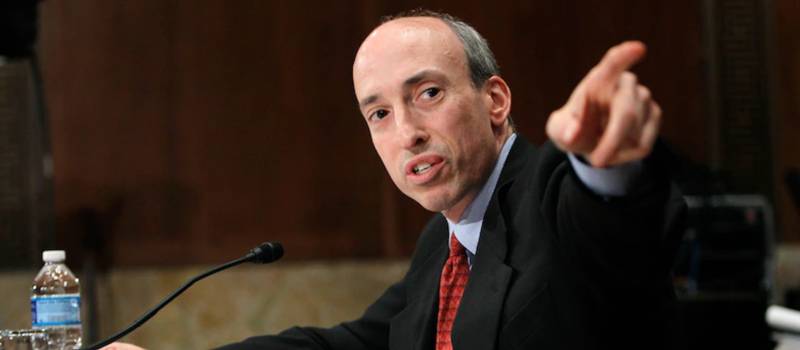
SEC Chair Gary Gensler Says Crypto Will ‘Not End Well’ if It Stays Outside Regulations
Dr. Doom and Gloom was at it again (wouldn’t it be nice to have even one of our present leaders took a positive spin on any simple shred of news? Does anyone realize they are hysteria-mongering almost each issue on the board or is it just me?)! SEC Chairman Gary Gensler talked about cryptocurrency regulation in an interview with the former federal prosecutor Preet Bharara at the Code Conference in Beverly Hills, California. Gensler explained that the crypto sector in the U.S. has many “trading venues and lending venues” with “not just dozens but hundreds and sometimes thousands of tokens on them.” Noting that “people will be hurt” if cryptocurrency markets are allowed to operate outside the horizon of regulations, the SEC chairman warned: “This is not going to end well if it stays outside the regulatory space. To think that a field that’s grown 10-fold in the last 18 months — not just in terms of asset value, but in the underlying lending and much more — that it’s going to stay outside of these public policy frameworks and succeed – we’ll end up with a problem and a lot of people will be hurt.”
In August, Gensler made his point clear when he said that the cryptocurrency field is not going to reach any of its potential if it tries to stay outside of the SEC’s laws. In the middle of September, former U.S. Treasury Secretary Larry Summers also said about the same thing – that cryptocurrency will do better regulated rather than being treated like a libertarian paradise. The SEC chairman said at a Senate Banking Committee hearing that same week that a number of cryptocurrency platforms, including the Nasdaq-listed Coinbase, have many tokens listed, insisting that some of them must be securities. Of course, Gensler then added, as an afterthought (lol – his intention the whole time) that the SEC needs more manpower and funding to better regulate the crypto sector (and into whose pockets might all this extra money be going, I wonder?). This was when he had stated, “Currently, we just don’t have enough investor protection in crypto finance, issuance, trading, or lending,” asserting that the crypto industry was “more like the Wild West or the old world of ‘buyer beware’ that existed before the securities laws were enacted.” Last week, Senator Pat Toomey wrote a letter to Gensler asking for clarity on crypto regulation.

The Best States for Bitcoin Mining In The U.S.
Bitcoin-friendly states will be the ones to benefit the most from innovation and technological development in the coming decades, and Bitcoin mining companies have flocked to the U.S. amid a hash rate exodus away from China. Fueled by extensive investments in talent and equipment, the industry’s profit is highly dependent upon the price for power, and mining farms deliberately select their location to ensure the highest margins. Some U.S. states allow customers to choose their energy providers, which then enable lower costs and tailored solutions. Other regions, however, impose mandates which only inflate prices and push away businesses seeking to create jobs and join a community. According to data from the Global Energy Institute, states like Texas and Washington have the lowest average price for electricity in the country. Both of these states are among the preferred destinations for bitcoin miners, who prefer to become established where power is cheaper since their variable costs are made up primarily of energy.
It turns out that Texas, Washington, Wyoming, Utah, and a handful of other states, provide customers with reliable energy at seven to nine cents per kilowatt-hour (kWh). However, energy prices in the U.S. can climb to nearly double that amount in those states from the East and West coasts. California, Connecticut, Maryland, and a few other states bill customers at 15 cents or more per kWh, and these are the highest energy retail prices in the country. The Global Energy Institute has a map which shows stark differences from state to state. “While the energy mix available within a state will play a large role in state electricity prices, energy-limiting policies in some states act to artificially elevate prices, making the price of electricity much higher for consumers and businesses.” The states with the highest energy prices are those that impose mandates and restrict choices. California, for instance, enforces several laws and incentives related to energy, including advanced technologies, alternative fuels and vehicles, and air quality. It has long been committed to restricting the ability of energy providers to engage in oil and gas initiatives. These kinds of conditions repel Bitcoin miners, as well as most businesses that are dependent upon cheap energy.
According to a CNBC report, Texas, on the other hand, “has a deregulated power grid that lets customers choose between power providers,” and this freedom of choice allows Bitcoin miners to plug into the energy grid and enjoy cheap power even as they diminish their carbon emissions. Companies across the U.S., such as Upstream and Great American Mining, have been building Bitcoin mining data centers geared to leverage both flared gas and stranded energy, which are abundant in Texas. In Washington, hydroelectric power has enabled Bitcoin mining farms to profit with renewable energy. Whereas high scrutiny, intense regulation, and energy-limiting policies inflate energy prices, pushing prospective miners away, freedom of choice and friendlier legislation enable lower costs, which is a more welcoming environment for interested parties. With Silicon Valley becoming a thing of the past, Bitcoin states will soon be hotbeds for a new financial system.

DC Comics Aims to Release ‘One of the Largest NFT Drops Ever’ at This Year’s Fandome
On October 16, the American comic book publisher DC Comics planned to drop a large quantity of non-fungible token (NFT) collectibles featuring the firm’s most beloved characters at the DC Fandome event. In partnership with Palm NFT Studio, the comic book publisher plans to release a number of NFTs featuring Harley Quinn, Wonder Woman, Batman, Superman, and Green Lantern. One of the largest and oldest American comic book publishers, DC Comics, Inc., revealed the announcement through Bitcoin.com News, and explained that the NFTs were hand-selected by DC’s publisher and chief creative officer Jim Lee. “We spent a lot of time on how to translate and adapt these classic covers into a 21st-century format such as NFTs. This drop pays homage to our 87-year history while visualizing a future in which NFTs play a foundational role in novel ways of interacting with DC content and unlocking new experiences,” Lee said. The announcement further detailed that the 2020 DC Fandome drew 22 million global views across 220 countries and territories in a mere 24 hours. The firm is expecting that 2021’s Fandome numbers will exceed last year’s and will make it the “first large-scale virtual event with registration powered by NFTs, and very likely one of the largest NFT drops ever.” The company said it collaborated with Palm NFT Studio because the company is “as flexible as artists are creative.”
In addition to that, Lee stated that “Palm’s blockchain provides a 99.99% reduction in energy usage compared to proof-of-work (PoW) systems. The blockchain allows DC to mint millions of NFTs for fans “with near-zero cost.” DC Comics had entered the NFT industry in recent times and has already released NFTs through Orbis Blockchain Technologies Limited and the Veve Digital Collectibles App. Meantime, Marvel Comics has also entered the NFT space by leveraging Orbis and the Veve App. Both firms have warned freelance artists not to publish the company’s brand name characters without permission. DC Comics also stated that their upcoming NFT drop on October 16th will have differing levels of rarity: the premier drop will offer fans the opportunity to collect three covers for each character in three levels of rarity. For example, fans of the Princess of Themyscira, a.k.a. Wonder Woman, can collect covers considered to be Common (1987’s Wonder Woman #1 by George Peréz), Rare (2021’s Nubia and the Amazons #1 by Alitha Martinez), and/or Legendary (Yara Flor on 2021’s Future State: Wonder Woman #1 by Jenny Frison) cover.
Palm NFT Studio’s co-founder Dan Heyman explained during the announcement: “It’s immensely rewarding to work with a partner like DC who understands that blockchain is more than a technology, it’s a sustainable storytelling tool that can reshape the relationship between creators and fans. What does it mean to be a fan? What does it mean to be a collector? These are age-old questions that we get to watch creators like DC answer in brand new ways every day.” DC Comics says fans can register for the DC Fandome event’s free NFT at dcfandome.com.

Bullish? Bitcoin Long-Term Holder Supply Shock Ratio Goes to New Highs
Citing data from analytics company Glassnode, popular crypto strategic commentator Will Clemente outlined the significant trend change of long-term holders, along with their behavior towards the #1 cryptocurrency. The Bitcoin Long-Term Holder Supply Shock Ratio has gone into its highest territory in years, and historic comparisons reveal that this could mean that the price of the cryptocurrency could soon head upwards once more. This coincides with numerous previous reports which claim that such investors, who are typically regarded as those who refuse to sell their coins for one year or more, have retained their BTC portions even in times of peak volatility. The metric itself – Long-Term Holder Supply Shock – essentially considers the coins that have not moved in a long time. Consequently, they are considered unavailable compared to the tokens that were recently transferred and are regarded as having availability.
The LTH Supply Shock Ratio has skyrocketed since the middle of this year and is currently at records levels. Clemente described this as a widely bullish signal that has historically served as the catalyst for bull runs. “Each time the metric has reached the upper bound of the highlighted green range, we’ve seen major price appreciation over the coming months,” he stated. The cryptocurrency community has never had a shortage of predictions where BTC’s price will be at the end of a particular year; however, it seems that the end of 2021, in particular, is gaining widespread attention. The number of people who have forecasted a $100,000 per coin price by December 31st includes the CEO of Chainalysis, Adam Back, Tom Lee, Anthony Scaramucci, analyst Kevin Wadsworth, and more. Interestingly, this is also the same price tag the popular stock-to-flow model envisions. By describing the stock in terms of size of existing reserves (stockpiles) versus the annual supply of bitcoins, the S2F and its variations see Bitcoin going well within a six-digit territory in the next few months. Even the creator’s worst-case scenario, which is more bearish than the S2F, predicts that BTC will eventually go above $100,000 in December this year.
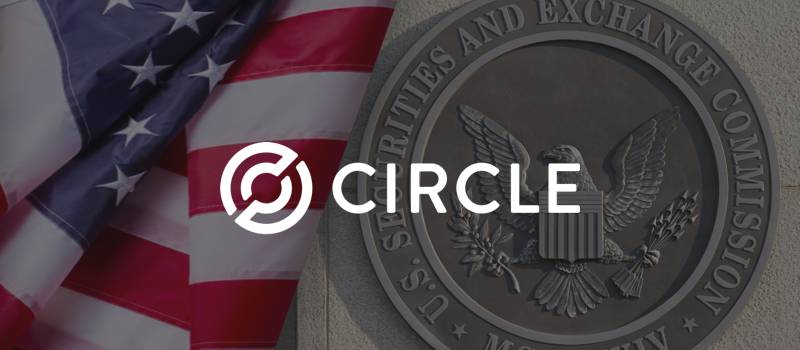
The US SEC is investigating crypto firm Circle over USDC product
The United States Securities and Exchange Commission sent an “investigative subpoena” to the crypto payments company Circle. This was revealed by the crypto firm via a regulatory filing saying that it had received the subpoena from the enforcement division of the SEC in July. In the July subpoena, Circle had stated its plans to go public through a special-purpose acquisition vehicle, commonly known as SPAC. In their filing, they said that the SEC was requesting “documents and information regarding certain of our holdings, customer programs, and operations,” while also disclosing that “we are cooperating fully with their investigation.” A new regulatory filing by Circle on October 4 shows that the investigation is still underway. While the first announcement had gone largely unnoticed, the new revelation informs us just how far the comical and disrespectful SEC will go to regulate the “unregulated” crypto space.
The press statement issued at the time of the subpoena showed that Circle had been planning to offer a yield program for institutional investors domiciled in the US and Switzerland. Circle had revealed that the reserve of its stablecoin, USDC, was held mostly in cash and cash equivalents, while the remainder was being held in commercial paper accounts, treasuries, and bonds. The crypto firm had agreed to pay the SEC commissioner $10 million earlier in the year over its role as an unregistered crypto exchange for Poloniex. But the SEC, under Gary Gensler, has repeatedly revealed its intention to regulate the crypto space, the commission’s chairman, in one of his recent interviews, urged crypto exchanges to register at once. Recent occurrences and revelations point to how the SEC has been approaching the crypto industry: simply put, it seeks to bring them extremely firmly beneath the veil of a “public policy framework.”

Expert Predicts: Last Resistance Before Ethereum At $5K?
A year ago, the price action that preceded the end of the year took the market into new highs. During the past week, the bulls have taken over the crypto market with Bitcoin and Ethereum recording gains across the board, and now the expectations are similar, but experts are yet to find a consensus. In his most recent report for Bloomberg Intelligence, Senior Commodity Strategist Mike McGlone stated that the “biggest surprise” would be to not see higher prices for Bitcoin and Ethereum. The two main cryptocurrencies by market cap have been experiencing short-term bearish obstacles but with long-term bullish fundamentals. The crypto ban imposed by China had been one of the most prominent obstacles. McGlone expects $40,000 to become the new critical support for Bitcoin in the coming months. Conversely, Ethereum could move into the $2,000 to $3,000 support zone in case of any downside risk. Both cryptocurrencies have been increasing their price floors after May, June, and July brought in a high amount of selling pressure into the market. In particular, Ethereum has major price tailwinds in non-fungible tokens (NFT’s), fintech, Stablecoins, and decentralized finances (DeFi). Due to that, McGlone believes ETH’s price is still in its early days of price discovery, moving into excelled appreciation.
The introduction of EIP-1559 has added even another new bullish factor for the Ethereum chart. According to McGlone, “Demand and adoption are rising, but our graphic depicts a notable difference from a year ago — plunging supply. At the start of 4q20, the 12-month rate of change in the measure of Ethereum supply from mosaic was closer to 5%. Now it’s on track to drop toward 2% because of a recent upgrade.” It is due to its use cases that Ethereum has managed to attract major players and thus take over important market share. The second largest cryptocurrency by market cap is starting to look more like a leader. The digitalization of money and finances will continue to create demand for Ethereum. In the DeFi sector, the growth has been exponential, with the total value locked of these assets reaching $100 billion versus the $20 billion recorded in 2020. The report claims that investors without a position in the crypto market could be making a similar mistake as those who missed out on the early days of the internet.

Bitcoin Will Become Currency in Brazil Soon, According to Federal Deputy Aureo Ribeiro
Bitcoin may soon become a regulated currency for payments in Brazil, according to statements given by Aureo Ribeiro, a Brazilian federal deputy. Ribeiro stated during the middle of October that with the pending approval of Bill 2.303/15 to regulate cryptocurrencies, new uses would be open for crypto holders, such as buying houses, cars, and even food in restaurants like McDonald’s. These comments are the product of the approval of the so-called Brazilian “Bitcoin Law” for presentation in the Plenary of the Chamber of Deputies, after it had been stuck in development for years. Ribeiro stated that, by its innovative design, the law could offer wisdom to other countries wishing to regulate digital assets. Ribeiro stressed, “We debated a few years there to arrive at a text that recognizes this asset… which will be regulated by a government agency, because we will work with the central bank and the CVM, depending on how this asset will be recognized, such as real estate value or currency of daily use.”
Ribeiro was very positive about the effect this new law was expected to have in protecting citizens from Ponzi schemes in the sector. Brazilians have been especially hit hard with these scams, and authorities have had to act against the promoters of alleged Ponzi schemes on at least several occasions this year. Cryptocurrencies in Brazil are still a gray area, and authorities are limited in the scope of their ability to control these companies. Ribeiro stressed that with this law, the government wants to “separate the wheat from the chaff, create regulations so that you can trade, know where you are buying, know who you are dealing with.” In conclusion, the federal deputy said that the law project had support in the government, and it has also been discussed with Arthur Lira, president of the Chamber of Deputies. Ribeiro is of the firm belief that it is just a matter of time for the law to be approved.
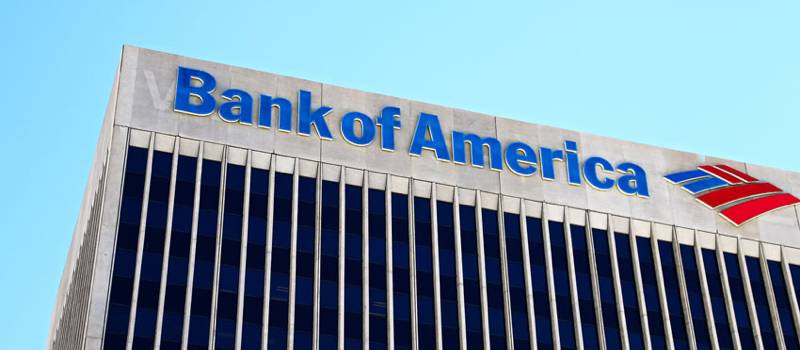
MUCH OF WHAT YOU NEED TO KNOW
Bank of America released their latest crypto report, with BofA strategists Alkesh Shah and Andrew Moss describing the crypto market as “too large to ignore” and that “there could be more opportunity than skeptics expect.” As Bitcoin returned north of $50K, it was a good time to review the key findings from the 140+ page report. Both the BofA, along with independent metrics covering Bitcoin inflows, reflect strong institutional interest. Additionally, beyond simply traditional financial institutions, Bank of America also cites the potential for further integration of blockchain technology in daily life. “In twhe near future, you may use blockchain technology to unlock your phone; buy a stock, house or fraction of a Ferrari; receive a dividend; borrow, loan or save money; or even pay for gas or pizza,” the report states. Of course, many different projects are already working on tools for some of these exact use cases, and a whole lot more. Outside of existing economies ripe for reinvigoration, the report also calls out projects and firms that are becoming inherently native to the digital asset ecosystem. One thing is abundantly clear: digital assets are on major corporate radars, and as BofA states – “corporations aren’t risking being left behind.” The report mentioned companies in information technology and finance, but also included consumer staples, real estate, health care, and more.
To provide a brief summary on Bank of America’s thoughts on everything that isn’t a fungible token or straightforward blockchain project, to sum up, the report soberly acknowledged the emergence of DeFi, despite it being seen as somewhat of a threat to traditional financial firms like Bank of America. The bank’s report described Dapps as having the potential to bring financial services to nearly two billion individuals across the globe without savings accounts. Then it turns out, what many crypto advocates and loyalists have been working towards seems to be turning out now to be widely acknowledged by some of the biggest traditional institutions in the game. When it comes to NFTs, as with digital assets in general: Bank of America is bullish. The firm describes NFTs as “changing the way creators connect with fans and receive compensation,” and that NFTs have immense potential in demonstrating ownership without any middleman fee. Finally, regulatory uncertainty was cited in the report as the largest near-term risk, and understandably so. Regulatory risk was thought to be exacerbated due to the emergence of Stablecoins, however the report noted that, despite having fewer liquid reserves, Stablecoins were within “a waiting zone between fiat currencies and digital currencies, which could further accelerate adoption of the latter.” The report concluded that central bank digital currencies (CBDCs) were a “when, not if” situation.
The report stated that over twenty million U.S. adults own digital assets, which comes to roughly fourteen percent, while an additional nineteen million planned on buying digital assets sometime this year. Bitcoin has amassed one of the largest market values on the planet, and in this case, it is the rising tide that is lifting altcoin boats. Additionally, CBDCs are on the horizon, and Bank of America estimated that countries encompassing about ninety percent of all of the global GDP are currently reporting they are exploring CBDCs. Meanwhile, engagement in NFTs and DeFi products are increasing rapidly as well. While they acknowledged the regulatory hurdles that the market will need to overcome, the BofA report also mentioned that Illicit activity with crypto has been a staple for bears, but they noted that digital assets associated with illegal activities have been cut in half compared to 2019. At the end of the day, BofA is admittedly optimistic looking forward, and it seems, as more traditional finance operations come to terms with crypto’s role across a variety of industries, adoption is only set to increase. Grab your transporter device and call the U.S.S. Enterprise! Perhaps it’s time to say, “Beam me up, Scotty!”

Ethereum is Primed for a Rally?
The following is a technical breakdown of how crypto’s second largest coin by market cap was behaving during the second week of October. To start, Ethereum made a fresh increase above the $3,550 resistance level, and the price traded above $3,500 and the 100-hourly simple moving average. A short-term bearish trend line formed with resistance near $3,575 on the hourly chart of ETH/USD and it was then felt that the pair could continue to rise so long as ETH remained above the $3,420 support zone in the near term. Ethereum remained in an uptrend, and if it could extend its increase above the $3,500 resistance zone, traders felt that ETH would then climb above the $3,550 level and the 100-hourly simple moving average. During the increase, there was a break above the key bearish trend line. The pair then cleared the $3,600 zone and headlines read, Ethereum extended its rally above $3,600 level against the US Dollar. ETH price is consolidating gains and it might surge again if it clears $3,575. A high formed near $3,628 and it began correcting gains lower, below the $3,600 level, and then traded below the 23.6% Fib retracement level of the recent wave from the $3,343 swing low to $3,628 high.
It was consolidating near the $3,500 zone. An immediate resistance on the upside is near the $3,550 level, and its first major resistance is near the $3,575 level. There is also a short-term bearish trend line forming with the next major resistance near the $3,600 level. If it breaks through that, the price might accelerate higher. In the stated case, the price may possibly rise towards the $3,700 level, with the next key resistance being around $3,800. Dips appear to be limited in ETH, but if it fails to continue higher above the $3,550 and $3,575 resistance levels, it could start a fresh downside correction. An initial support on the downside is near the $3,500 level. The first key support is now forming near the $3,480 level, which is close to the 50% Fib retracement level of the recent wave from the $3,343 swing low to $3,628 high. Any further losses could lead to a price towards the $3,425 support zone and the 100-hourly simple moving average. Technical Indicators include the Hourly MACD, with the MACD for ETH/USD now slowly moving in the bearish zone. Also, Hourly RSI, with The RSI for ETH/USD now above the 50 level. At this time, the Major Support Level for ETH is $3,425, with a Major Resistance Level at $3,575.
NYC’s Penn Station transformed into the largest public crypto NFT sale
An interactive art sale featuring over fifty digital NFTs, accessible by QR code, ensured that crypto fever reached all the way to Penn Station in New York City. Launched October 4, the ‘Art in Motion’ exhibition is curated by Plug Talk Media founder Nathan Nakhmanovich, who also goes by the name Mogul, and it transformed Penn Station into a first-of-its-kind digital art sale. Featuring non-fungible tokens (NFTs) from dozens of artists, the sale will include more than 200 media assets throughout Penn Station, which is considered to be the busiest transportation hub in the Western Hemisphere. Visitors will be encouraged to participate in the exhibit through advertisements on column wraps, clocks, rotunda banners, and stair risers, to name a few. They will be expected to scan QR codes placed on the ads that will unveil the digital artworks available for bid through the NFT marketplace OpenSea. The artists in the exhibition were hand-selected by Mogul and executive producer Eric Spivak, who also goes by the name Motivate. Nathan Nakhmanovich stated that “this campaign is a statement on the NFT revolution and the power of OOH. While other NFT galleries have used smaller public and private spaces, the ‘Art in Motion’ gallery will bring NFT to the real-world scale of public transit and showcase how to effectively drive attention from IRL to digital for the masses.”
With more than $2.5 billion in NFT sales occurring in the first half of 2021 alone, NFTs have been front and center this year. In March, an NFT was sold for a staggering $69 million. First introduced in 2014, NFTs can range from movies to music to memes, but they have become especially popular amongst artists and now serve as a new way to buy and sell digital artwork. Considered to be a great way to represent ownership of unique and often rare digital assets, NFTs are booming. “Art In Motion’ is a pivotal moment for us all to recognize. The innovative use of QR codes tied to Arts and Culture is providing huge opportunities for creators, collectors and curates alike,” said Eric Spivak. He continued, “From physical to digital and back, this is an envelope-pushing progressive project with purpose that I hope receives the attention, love and respect it deserves, while providing accessibility to the NFT space and hopefully changing the lives of both the artists and commuters in the process.”
Alexander Bercow, Partner Success Lead of OpenSea, stated, “We’re excited to be working with Mogul to showcase and support talented independent creators in the iconic Penn Station. We believe we’re only just scratching the surface of what’s possible with blockchains and tokenized media – and this activation is proof that NFTs are changing the way society interacts with art.” In the same way NFTs have brought the market for physical art to the digital world, OOH (Out of Home advertising) brings the digital world to public space and allows artists and brands to push and blur those boundaries. It often brightens otherwise dimly lit consumer areas, and OOH presents the perfect canvas for an experiential exhibition like ‘Art in Motion,’ which is quite capable of immersing an audience throughout each step of their journey.
Why crypto exchange Kraken predicts a $100,000 value for Bitcoin (BTC)?
A recently released report by the digital exchange company Kraken, a leading US-based crypto exchange, is of the opinion that the price of Bitcoin could touch as high as $100,000 before the end of this year. Citing data from previous years, the report indicated clearly that BTC’s price tends to surge during the fourth quarter of any given year. The exchange continued that this period has always seen “an average and median return of +119% and +58%, respectively.” As most readers know, Bitcoin’s value, from the earliest of days, has always attracted different price predictions from many crypto analysts and sceptics alike. Kraken believes that using the fourth quarter results from previous years, that BTC could finish this year very close to $100,000, so long as the average returns from previous years occur once again. Using the words directly from their report, “at BTC’s quarter-end closing price of $43,800, a +119% return in 4Q2021 would put BTC at roughly $96,000.” They did, however, go on to state that if we were to see the advent of its median return, rather than its average return, this would mean BTC could be finishing the year at around $70,000. If you have been watching the price action, the value of the crypto king has been on a rally since the beginning of October and has been hitting heights it hasn’t touched in the previous months. According to data from CoinMarketCap, BTC’s market cap is now back over $1 trillion.
Regarding other digital assets, the Kraken report was of the opinion that the number of Ether being burned daily was largely being pushed by decentralized exchanges and demand for NFTs.
According to the exchange’s report, “activity on NFTs and DEXs (decentralized exchanges) make up most of ETH burned.” They then added, “a decline in demand for NFTs and activity on DEXs could result in ETH being less disinflationary and subsequently temporarily soften demand for the crypto asset.” The report concluded, however, that the EIP-1559 upgrade has had a positive effect on the volatile nature of Ethereum fees.
On-chain data shows Bitcoin (BTC) whales are ‘hodling’ on as BTC nears $60,000
Glassnode’s report for the first week of October revealed that Bitcoin’s (BTC) recent constructive price action reflected upward trends in accumulation and HODLing behavior (those holding BTC long-term), as well as elevated on-chain activity and increased network utilization. However, simultaneous with the positive price action, it seems derivatives markets recorded an influx of open interest, futures premiums, and positive funding rates, which are, according to the blockchain data and intelligence provider, enhancing the likelihood of a “leverage squeeze.” At that time, the price of Bitcoin persisted within a tight consolidation range, between $53,657 and $56,250. Following a strong rally from September’s lows, the market succeeded to hold onto its gains, and on-chain activity increased. The Glassnode report read, “Active Entities, the count of individual participants on-chain each day, has grown 19% to this week, reaching around 291k active entities per day. This value is on par with counts from late 2020 at the beginning of the last bull run.” While recounting that the boosted network activity has “historically correlated with growing interest in the asset during early-stage bull markets,” the report revealed that the typical coin value of transactions has also increased.
According to Glassnode’s data, since the middle of September, the median transaction size has steadily risen, and the report pointed out that, “an increased typical transaction size is not synonymous with price appreciation, but indicative of larger, and even institutional-sized capital flows present on-chain.” Additionally, the dollar value of volume moving on-chain has also increased during the past week. Transfer volume (USD) as a percentage of the realized cap broke above the 3% threshold, another historically bullish signal, suggesting an increase in demand for on-chain settlement of value. Glassnode explains that the ratio between the two metrics “gives a sense of the level of demand volume relative to the value of the coin supply valued at the time it was last spent on-chain.” Meantime, the supply held by Long-Term Holders (LTH), revealed the HODLing mentality’s strong persistence.
Ethereum (ETH) developers looking to delay difficulty time bomb, what could this mean?
Ethereum developers (devs) Tim Beiko and James Hancock posted proposal 4345 which is meant to delay the difficulty time bomb until May 2022. The difficulty time bomb refers to a process that would make Ethereum mining increasingly harder to do, with the goal being to arrive at a point where mining is no longer profitable. When that happens, the blockchain would grind to a halt as miners switch off their equipment or move their mining resources to other chains. This intends to gradually phase out miners as part of Ethereum’s switch from proof-of-work (PoW) to a proof-of-stake (PoS) network. Throughout this transition process, the mining community itself has undergone a great deal of uncertainty. Although ETH 2.0 is inevitable, there is no doubt that miners are happy to prolong the current situation to maximize their profit potential. What can be deduced from another proposed delay to the difficulty time bomb?
The London upgrade, which went live on August 5, was all about proposal 1559 – fee market change for more predictable gas fees. However, this upgrade also contained a number of other proposals. Under proposal 3554, the difficulty time bomb had already been delayed until December when the London upgrade rolled out. Gearing up for ETH 2.0, difficulty time bombs have been detonated twice in Ethereum’s history – once in 2017, and more recently in November 2019 under EIP 2387. But a reluctance to detonate another time bomb suggests Ethereum devs aren’t ready to start the process of phasing out miners altogether just yet. Under October’s EIP 4345, the devs are looking at detonating the bomb mid-way through the second quarter of 2022, and they added that the bomb can be readjusted for a longer burn until mining is impossible, or that it might be removed altogether. From the proposal: “Targeting for the shanghai upgrade and/or the merge to occur before May 2022. Either the bomb can be readjusted at that time or removed altogether.” The latest info from developers ConsenSys informs us that “the merge” is set for Q1/Q2 2022. Making the switch to PoS involves running the ETH 1.0 and ETH 2.0 chains parallel with one another until some future date when both chains can be merged. This would be when Ethereum ceases to be a PoW blockchain, and some see this as the point when Ethereum 2.0 goes live. But there is an additional phase, “Shard Chains,” in their latest proposal, which is said to improve scalability, and that is set to roll out in late 2022. If EIP 4345 occurs in Q2 2022, then the merge cannot happen until some date after then, and this would suggest ETH 2.0 is running behind schedule.
MassMutual Bitcoin Investment Has Tripled In Dollar Terms
The Massachusetts Mutual Life Insurance Company (MassMutual) has more than tripled the dollar value of its Bitcoin investment in under one year. The insurance company bought an undisclosed amount of BTC for $100,000,000 on December 10, 2020, when the Bitcoin price was hovering around $18,500. MassMutual secured their $100 million Bitcoin purchase through institutional Bitcoin services provider NYDIG. At that time, MassMutual explained that its BTC acquisition was part of a strategy to remain diversified, and yet take advantage of new and arising opportunities, the Wall Street Journal had reported. In addition to the $100 million Bitcoin purchase, MassMutual acquired a $5 million stake in NYDIG itself. The precise amount of Bitcoin that MassMutual bought was unknown, however on December 10, 2020, the all-time high (ATH) price for BTC was $19,918. One bitcoin is now worth over $60,000, meaning that MassMutual has more than tripled its investment in less than one year. As Bitcoin starts approaching its current ATH of $64,895, this would mean that everyone who has ever purchased a Bitcoin would be mostly in the profit zone, in dollar terms. The same holds true for institutional investors. Jack Dorsey’s Square, for instance, has officially more than doubled its money on its Bitcoin investment. The company’s $220 million BTC purchase is now worth over $470 million, and Michael Saylor’s MicroStrategy is also very much in the green. The company’s $3.16 billion investment in BTC is now worth over $6.7 billion.
SEC approval of Bitcoin futures EFTs sees Bitcoin price soar
According to sources cited by Bloomberg, The US Securities and Exchange Commission (SEC) is set to approve the first Bitcoin (BTC) futures exchange-traded fund (ETF). Sources familiar with the development confirm that the SEC will allow Bitcoin-tied products previously filed for approval by ProShares and Invesco. They may indeed be set to trade as early as next week. The news has seen Bitcoin’s price cross the $60,000 mark for the first time since April and has significantly buoyed investor sentiment. It had been almost a decade of waiting for such approval, with the agency either rejecting or delaying a decision on several applications since 2013. According to ETF analyst Eric Balchunas, the SEC is not opposed to Bitcoin futures ETFs, and approval for at least one of the exchange-traded funds mentioned above is “pretty much a done deal.”
Bloomberg’s report on an imminent approval of a Bitcoin futures ETF came just after a warning to investors from the SEC’s investor education office. A tweet posted by the agency last Thursday urged investors to “carefully weigh the potential risks and benefits” of investing in BTC or funds that hold Bitcoin futures contracts. This is not the first time the SEC has tweeted this warning, but according to Balchunas, its timing points to a decision. Balchunas said, “the last time the SEC tweeted this bulletin was 7/26, one day before ProFunds’ bitcoin strategy mutual fund “went effective” on 7/27 and two days before it launched on 7/28. If pattern holds, ProShares ETF will be trading Mon or Tue….” In the hours following the regulator’s notice and reports of approval being a “done deal,” Bitcoin’s price soared. Bitcoin is trading around $62,015 at the start of the week, and bulls are looking likely to attempt a retest of the all-time high of $64,804.72 reached on April 14th.
Proshares Bitcoin Strategy ETF Debut Captures Close to $1 Billion in Volume
Proshares Bitcoin Strategy exchange-traded fund (BITO) launched the third week of the month, and it did well on its first day, closing at $41.94 per share. Meanwhile, the price of Bitcoin (BTC) soared on the next day, reaching a high of $64,367 on the crypto exchange Bitstamp just fifteen minutes after the closing bell on Wall Street at 4pm EST. The Proshares Bitcoin ETF commanded serious volume throughout its first day. As BITO shares swapped hands on the New York Stock Exchange (NYSE), it reached a daily high of over $42. Bloomberg Intelligence analyst James Seyffart tweeted at the end of the day: “Looks like the final tally is gonna be right around ~$990 million in trading for BITO on its first day trading.” The senior ETF analyst for Bloomberg, Eric Balchunas, also tweeted about the action the Proshares Bitcoin Strategy ETF saw on Tuesday. He said, “BITO just about $1 [billion] in total volume today (curr $993m but trades still trickling in). Easily the biggest Day One of any ETF in terms of ‘natural’ volume. It also traded more than 99.5% of all ETFs ([including] some big [ones] like DIA, ARKK, SLV). It [definitely] defied our expectations.” The analyst then added: “If we don’t exclude ETF’s where their day one volume was literally one pre-planned giant investor or BYOA (not natural), it still ranks #2 overall.”
While the Proshares Bitcoin ETF had a decent day, Bitcoin (BTC) spot markets also rampaged on October 19. BTC’s market cap swelled to over $1.2 trillion on Tuesday and there had been $42.4 billion in global trade volume throughout the day. Balchunas stressed that the result of the day’s first Bitcoin ETF performance in the U.S., “makes life that much harder for the next in line ETFs to succeed. Everyday counts [because] once an ETF gets [known] as ‘the one’ and has tons of [liquidity], it’s virtually imposs to steal (see SPY, GLD).” Balchunas concluded: “What does this mean for assets? My guess is about half of this volume will end up as flows next two days. [probably] looking at $750 [million] by end of week, something like that. Tomorrow’s volume will be interesting and how much it comes down to earth vs [staying] high.”
Wall Street Strategist Puts Bitcoin as High as $168,000 by Year-End
According to a Bloomberg report, co-founder of Fundstrat and Wall Street Strategist Tom Lee has revealed his expectations for Bitcoin before the year runs out. Lee explained that he had high expectations for the digital asset, which he believes will hit the $100,000 mark by the end of the year a conservative estimate. He added that the asset could easily go as high as $168,000 if certain factors come into play. Lee has always maintained a bullish stance on cryptocurrencies, and he is doubling down on his prediction, which he had first made back in May. The asset’s volatility has never worried the Wall Street strategist and he fully acknowledges its highly volatile nature. “I think Bitcoin is hyper-volatile,” Lee told TechCheck in May. “That’s the nature of it, but that’s what creates the reward for people.” The co-founder of Fundstrat explained the factors driving his price prediction for BTC, and the recent ETF approvals for Bitcoin was the major one. The first U.S. Bitcoin Futures ETF began trading last week and Lee believed that this will be the major reason behind the asset hitting the $100K price mark.
Since adoption is the name of the game, the Bitcoin Futures ETF will help to drive large inflows, which will translate into a higher value for the asset. With the Futures ETFs, Lee explains that the fund will allow many more individuals to allocate a portion of their investment portfolios into crypto, and “this will drive significant new inflows.” Bitcoin at $100,000 is an increasingly common prediction amongst top market participants. Even though the asset had taken quite a beat-down in the market in September, most market participants maintained their predictions that the asset would hit $100,000 before the year ended. These predictions have been attributed to numerous factors, but the forecasts have always remained the same: the market will see BTC at $100K before the next bull market. Skybridge Capital CEO Anthony Scaramucci has also said the asset will hit $100,000 by year’s end, pointing out that as adoption grows worldwide, so will the value of BTC. Meantime, Fidelity analyst Jurrien Timmer told CNBC that BTC could be far from hitting $100,000. Jurrien believed the price will eventually hit this point, but puts it on a much longer time frame.
ETH/USD Bulls Eyeing 4000: Sally Ho’s Technical Analysis 20 October 2021 ETH
Ethereum (ETH/USD) has been in a tight range and has sought to extend recent gains as it continued its comeback following recent selling pressure which had emerged around $3968. That was a level that was close to an upside price target of $3964. During a subsequent and rather quick sell-off at that level, ETH/USD traded as low as $3643, which represented a test of the previous upside price objective and had translated to buying pressure around the $3269. Buying pressure had also been seen around the $3688 level, and this was representative of the 23.6% retracement of the appreciating range from 2781 to 3968. Additional upside price objectives include 4058, 4097, 4190, 4318, 4330, 4490, 4523, 4793, and 4893. Following the recent appreciation, downside price retracement levels and areas of potential technical support include 3688, 3515, 3375, 3235, 3082, and 3035. Traders observe that the 50-bar MA (4-hourly) is bullish above the 100-bar MA (4-hourly) and above the 200-bar MA (4-hourly). Also, the 50-bar MA (hourly) is bearish below the 100-bar MA (hourly) and above the 200-bar MA (hourly). Price activity is nearest the 50-bar MA (4-hourly) at 3701.79 and the 100-bar MA (Hourly) at 3829.22. Technical Support is expected around 3515.25/ 3375.24/ 3235.23 with Stops expected below.
How Bitcoin Grants “The Highest Degree of Assurances” To Holders
In an episode of “The Center Cannot Hold,” Pete Rizzo joined host Alex McShane to discuss his latest article in Forbes entitled, “Against Cryptocurrency: The Ethical Argument for Bitcoin Maximalism.” During the interview, they explored the following topics: how Bitcoin is the only cryptocurrency that truly protects users’ rights, the various disagreements between crypto agnostics and Bitcoin maximalists, and why it’s important to distinguish, for new people coming into the space, Bitcoin from crypto; along with other things. At one point, Rizzo stated, “Do you have the right to your money – absolutely, in any case where you would disagree with anyone? In Bitcoin, I think we have the highest degree of assurances that it is providing that.” They also discussed how Bitcoin is the only system of money that protects minority users’ rights, Bitcoin’s immaculate conception, how this makes Bitcoin different, and why Bitcoin isn’t “old technology” and can’t just be replaced by some new system. “In Bitcoin, you had a period where bitcoin was worth nothing,” Rizzo said. “And then Bitcoin monetized. It was almost like the spontaneous creation of life. You have data that was valueless, and then Bitcoin crossed that chasm. It became life, it became value.”
X8, The World’s first Stablecoin backed by 8 currencies will be issued under the Swiss Sandbox regime
On October 18th, 2021, X8 AG announced that the company will commence with the issuance of the X8 Global Stablecoin under the Swiss Sandbox regime, and it is expected to be available Q1 of 2022. Further, X8 AG stated that they have added key expertise in order to assist pursuance of a FinTech license and provide leadership for organic corporate development. Right from the start, the X8 Stablecoin has been designed and developed from the ground up to be fully compliant with the regulatory environment in Switzerland. X8 will be comprehensively backed by eight currencies (USD, EUR, JPY, GBP, AUD, CAD, CHF, and NZD). The stability of X8 will be managed by its proprietary algorithmic risk management process, which is designed to monitor currency fluctuations and to then adjust the weighting of the currency portfolio backing the X8 Stablecoin. Because of this, X8 will remain relevant as it adjusts to the ever-changing competitive landscape between the eight currencies. X8 AG believes this will ensure that the X8 Stablecoin will retain optimal stability with minimal liquidity risk. This is the first time anywhere that this feature will exist for any Stablecoin. X8 should have an innate capacity to be bought and sold against any or all of the eight fiat currencies.
X8 AG is a Swiss-based Fintech company owned by the X8 Group, Inc. Building on the successful ICO of the X8X utility token in 2018, the company progressed with the development of the World’s first Stablecoin backed by eight currencies. Due to its regulatory compliant structure, X8’s goal is to become the Global Stablecoin most fit for international exchange by both institutional and retail users. The development of proprietary tools and platforms using global tech megatrends such as AI and Blockchain has created stability in value for financial market players. X8 will focus on three main fields: Professional portfolio risk management platforms, Stablecoins, and Algorithmic investment models used in asset management. X8 AG is driven by its founder’s focus to bring compatibility between the traditional and the new decentralized financial landscape. The company is built upon the foundation to operate in a regulatory compliant way. Contacts for X8 AG: Investor information contact: Bashar Alsaneh, Listing Partners, SL support@listingpartners.lu +46 728 3842 50; Media Relations: Triona McHale, Partner, Ignite Communications triona@ignitecomms.com +353 87 2651473; and finally, X8 AG, Gregor Koželj, CEO ceo@x8ag.io +41 79 199 84 51.
X8 is now in the process of being granted a FinTech license. Under a FinTech license, X8 would be authorized to accept deposits from the public, up to a maximum threshold of CHF 100 million. These deposits will not be invested and no interest will be paid on them. X8 AG founder and CEO Gregor Koželj, who will be an invited speaker at the upcoming Redeye Fintech Day Conference, commented: “X8 AG is excited to announce the Swiss sandbox launch of the X8 Stablecoin during such an epochal period of digital money. We are conscious that the Stablecoin market is growing at a fast pace and with a recent valuation near $130B is correctly drawing attention from global regulators. Resultantly, with the addition of these key resources announced here, we are working toward having the X8 Stablecoin emerge from Switzerland in a regulatory compliant way. Socioeconomics at large awaits an effective Stablecoin that provides efficient payments in a fully compliant environment and for the holders, a way to keep liquidity in a multi-currency value preserving coin. The scaling of X8 will require significant effort and resources, we are confident that our plans will attract and reward our stakeholders.”
To assist with the introduction and issuance of the X8 Stablecoin, the company has engaged METI Advisory AG as their lead advisor, along with a Big Four Swiss legal practice to pursue the FinTech license. METI Advisory AG’s managing partner, Dr. Mattia Rattaggi, has twenty-five years of experience in the financial industry, and is considered an expert in digital finance and regulation. He has both advised and carried out several Fintech and crypto projects and is a regularly invited keynote speaker at global conferences (he was to be featured at the upcoming Redeye Fintech Day Conference on October 20, 2021). Issuance of the X8 Stablecoin into the Swiss sandbox is a milestone for the X8 AG. The importance of the Swiss sandbox is that it provides an innovative space for Fintech applications along with their business models to be tested. It allows for a company, without the prior approval or review by the regulator and no license requirement, to accept deposits from the public in an amount of up to CHF 1 million, regardless of the number of depositors. The deposits are not supervised by regulators, and they are not covered by the depositor protection regime. X8 AG will operate under the Swiss sandbox in compliance with AMLA and KYC provisions and affiliation to a self-regulatory organization. During Swiss sandbox, X8 deposits amounts shall not exceed the CHF 1 million limit. It is the company’s intention, that during the sandbox trial period, all other benchmarks will be accomplished and exceeded. These include capital reserves, user protection, compliance, and anti-money laundering requirements. This means that X8 is currently not subject to FINMA supervision and that the funds will not be protected by the Swiss depositor protection system until X8 has obtained the FinTech license.
Meantime, Bitcoin Hits Another All-Time High!
Bitcoin (BTC) recently achieved a significant milestone of setting a new all-time high (ATH) price at the $66,900 level after 189 days of waiting. Nevertheless, the leading cryptocurrency is facing a correction, having retraced to the $63,349 area during intraday trading late last week, according to CoinMarketCap. Despite this trend, holders remain unperturbed that history may well repeat itself. Lucas Outumuro, the head of research at IntoTheBlock, explained: “Is Bitcoin facing a deeper correction? Unlikely. Historically, after breaking an ATH, following a correction of 30+ days, BTC proceeds to increase by 145%, and on average, hodlers remain unfazed by the recent dip.”
Walmart Installing Bitcoin ATMs in Its Retail Stores
Daring to go where no crypto has gone before: Walmart Inc, the world’s largest retailer, announced on Thursday, October 21, that customers at some of its U.S. stores will be able to buy Bitcoin using ATMs installed by Coinstar. You heard that right – Walmart stated that it has begun a pilot program where consumers can purchase Bitcoin at Coinstar kiosks in some of its U.S. stores. Molly Blakeman, Walmart communications director, stated that: “Coinstar, in partnership with Coinme, has launched a pilot that allows its customers to use cash to purchase bitcoin. There are 200 Coinstar kiosks located inside Walmart stores across the United States that are part of this pilot.” Blakeman said that the pilot test by Coinstar started earlier this month, and the program includes two-hundred kiosks in Walmart stores. The program is part of a broader initiative by Coinstar, and they have partnered with a cryptocurrency exchange and payment firm called CoinMe, which specializes in Bitcoin ATMs. These specialized ATMs allow customers to purchase Bitcoin at its equipped kiosks.
Coinstar is currently best known for its machines that allow customers to exchange physical coins for cash. They plan to ramp up in order to provide Bitcoin at more than 8,000 kiosks worldwide. Meanwhile, Walmart is truly expanding its virtual payment options and is testing the pilot service program just weeks after the firm became a subject of a cryptocurrency hoax in September. That’s when a fake press release was published, claiming that Litecoin (LTC) would be accepted as payment at Walmart stores. The phony news sent values of the lesser-known crypto token surging. Though the announcement was false, Walmart was examining the future of cryptocurrency in its business operations. As reported by Blockchain.News in August, Walmart was then advertising that they were hiring cryptocurrency experts to help the firm develop “the digital currency strategy and product roadmap” while identifying “crypto-related investment and partnerships.” Important final note: an ever-increasing number of Fortune 500 companies are warming up to digital currencies.
The post The Digital Asset Landscape October 2021 appeared first on JP Fund Services.
Tradersdna is a leading digital and social media platform for traders and investors. Tradersdna offers premiere resources for trading and investing education, digital resources for personal finance, market analysis and free trading guides. More about TradersDNA Features: What Does It Take to Become an Aggressive Trader? | Everything You Need to Know About White Label Trading Software | Advantages of Automated Forex Trading



























